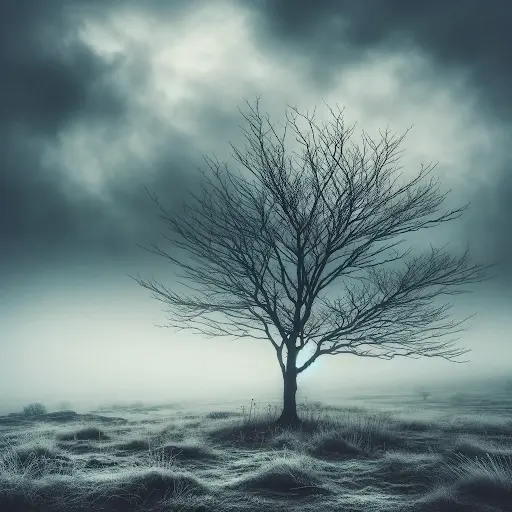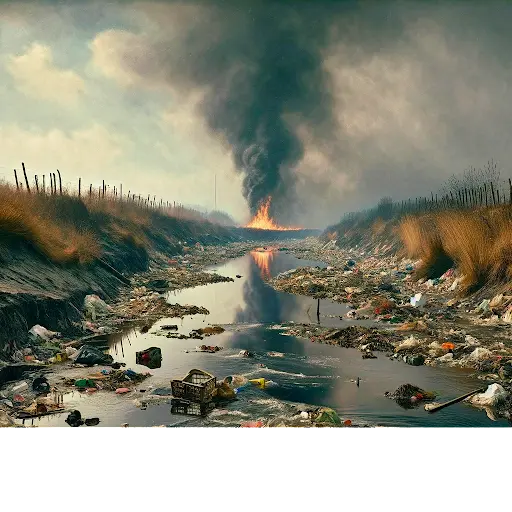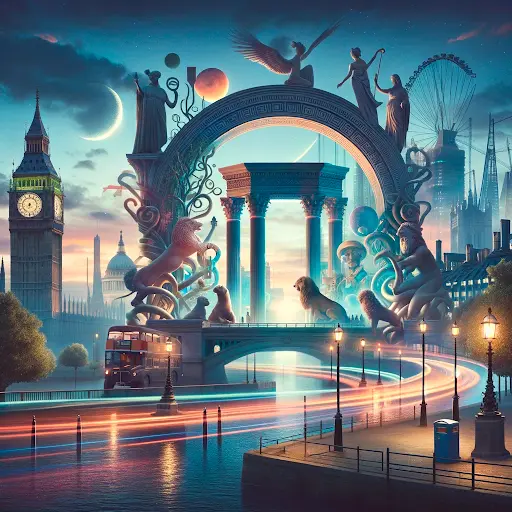Review of the waste land
Updated: 3 February 24
20
Introduction
Embark on an exploration of T.S. Eliot’s “The Waste Land,” a timeless gem in the crown of modernist poetry. This poem is not just a read; it’s an experience, offering a unique window into the soul of the 20th century. Eliot, a master of words, weaves a tapestry that is as perplexing as it is enlightening, painting a vivid picture of a world grappling with the aftermath of a global war.

About the Author
T.S. Eliot, a name synonymous with literary brilliance, carved a niche for himself in the annals of poetry. His educational journey, which led him from Harvard to the alleys of Europe, and his recognition, epitomized by the Nobel Prize, underscore his stature as a literary titan.
Dive Into the Review
What’s Inside ‘The Waste Land’
Eliot’s 1922 masterpiece is a kaleidoscope of cultural references, historical nods, and a blend of languages. It’s like a puzzle, inviting readers to piece together its fragmented narrative that touches on despair, societal decay, and the pursuit of something meaningful in a fractured world.

A Closer Look
Eliot breaks new ground with his approach to poetry, steering clear of the conventional to embrace a form that mirrors the broken spirit of the post-war era. The poem’s intricate nature and its labyrinth of references might seem daunting, but they set “The Waste Land” apart, placing it on a pedestal in modernist literature.

Reflections from the Heart
Reading “The Waste Land” is like peeling layers off a mysterious onion, each layer revealing insights about our collective despair and the relentless quest for meaning in a world that feels pieced together. The poem’s elusive charm beckons multiple readings, each revealing a new shade of understanding.

Who Should Wander This ‘Waste Land’
If you’re drawn to the enigmatic world of modernist poetry, or if you find yourself intrigued by the artistic expression of post-war sentiments and cultural fragmentation, this poem is your calling.

Wrapping Up
T.S. Eliot’s “The Waste Land” is more than a poem; it’s a voyage through the complex emotions and fragmented reality of a changing world. Its profound impact on literature and its ability to stir the soul make it an essential read for anyone looking to delve deeper into the essence of modernist poetry.
FAQs
Why is “The Waste Land” a landmark in modernist literature?
“The Waste Land” stands as a modernist beacon for its revolutionary form, rich symbolism, and its raw portrayal of post-war disillusionment, reshaping the poetic landscape.
What themes does Eliot explore in this poem?
The poem delves into the depths of despair, societal breakdown, and the quest for meaningful existence amidst chaos.
Is “The Waste Land” a challenging read?
Definitely, with its rich tapestry of allusions and fragmented structure, but it’s a journey worth embarking on for the literary adventurer.
How did Eliot’s life influence “The Waste Land”?
His academic pursuits and war-time experiences are intricately woven into the poem’s fabric, reflecting his profound insights.
Who should venture into “The Waste Land”?
It beckons those enchanted by the mysteries of modernist poetry and anyone eager to explore the artistic reflections of historical upheavals.
Meet the Reviewer
At My Review Book (MRB), our diverse team of literary aficionados brings their rich backgrounds in literature, history, and poetry to provide you with thoughtful, in-depth analyses of seminal works like “The Waste Land.”
Please Write Your Comments